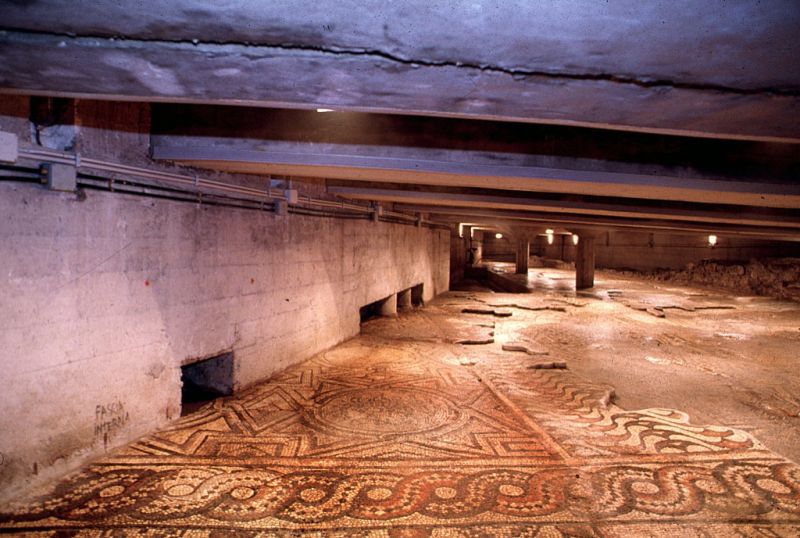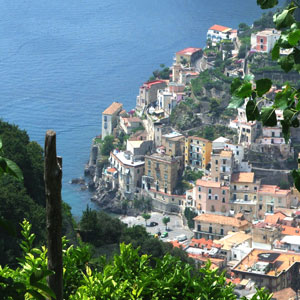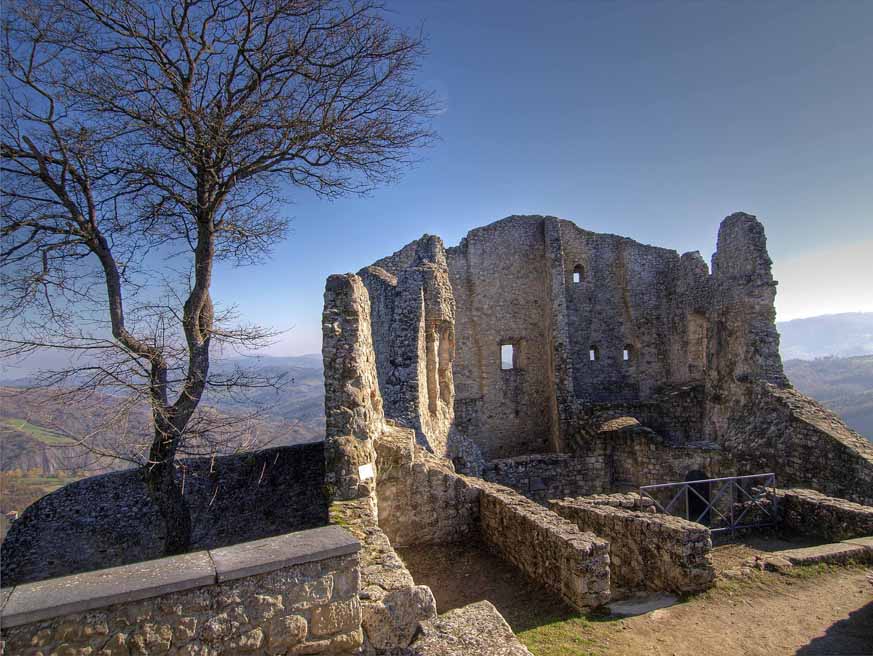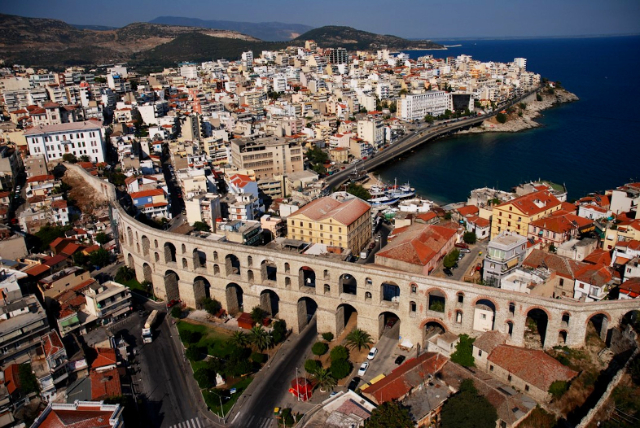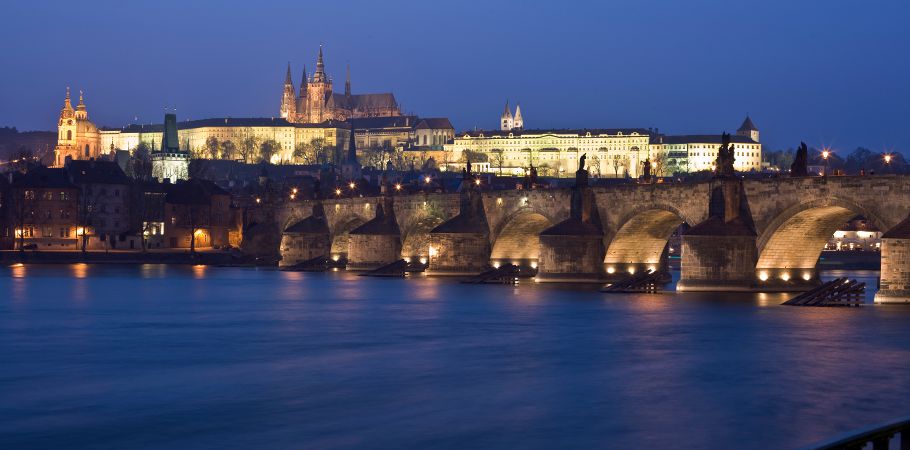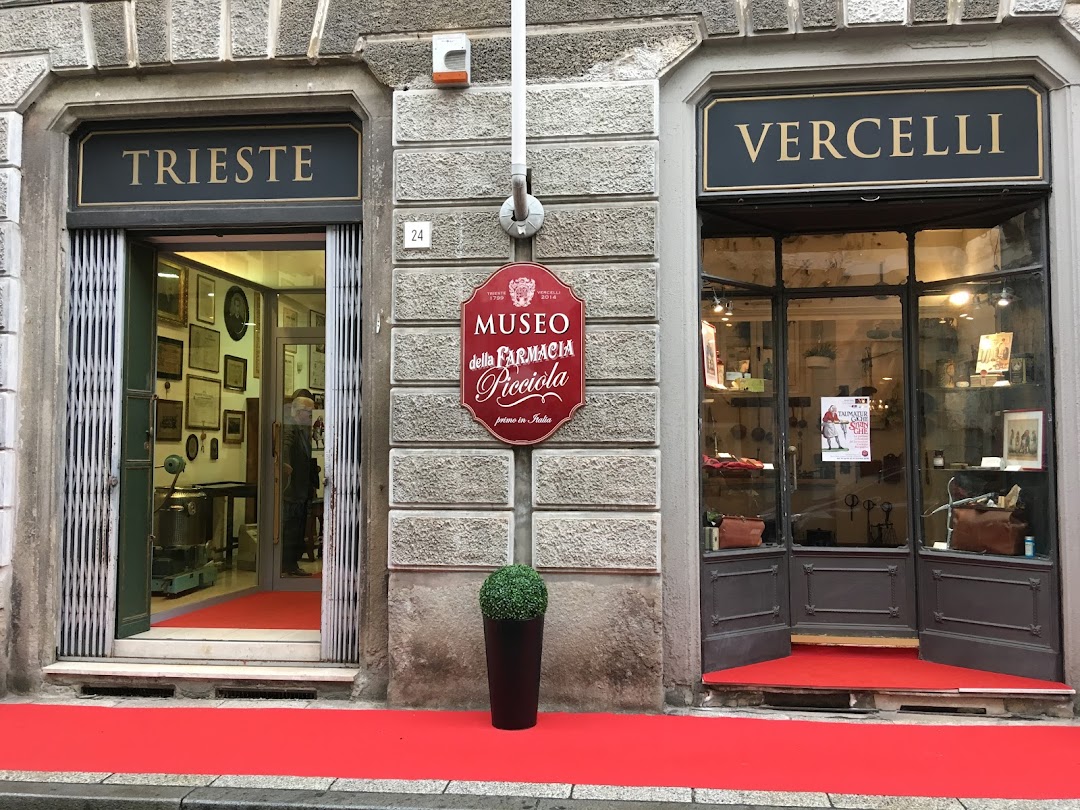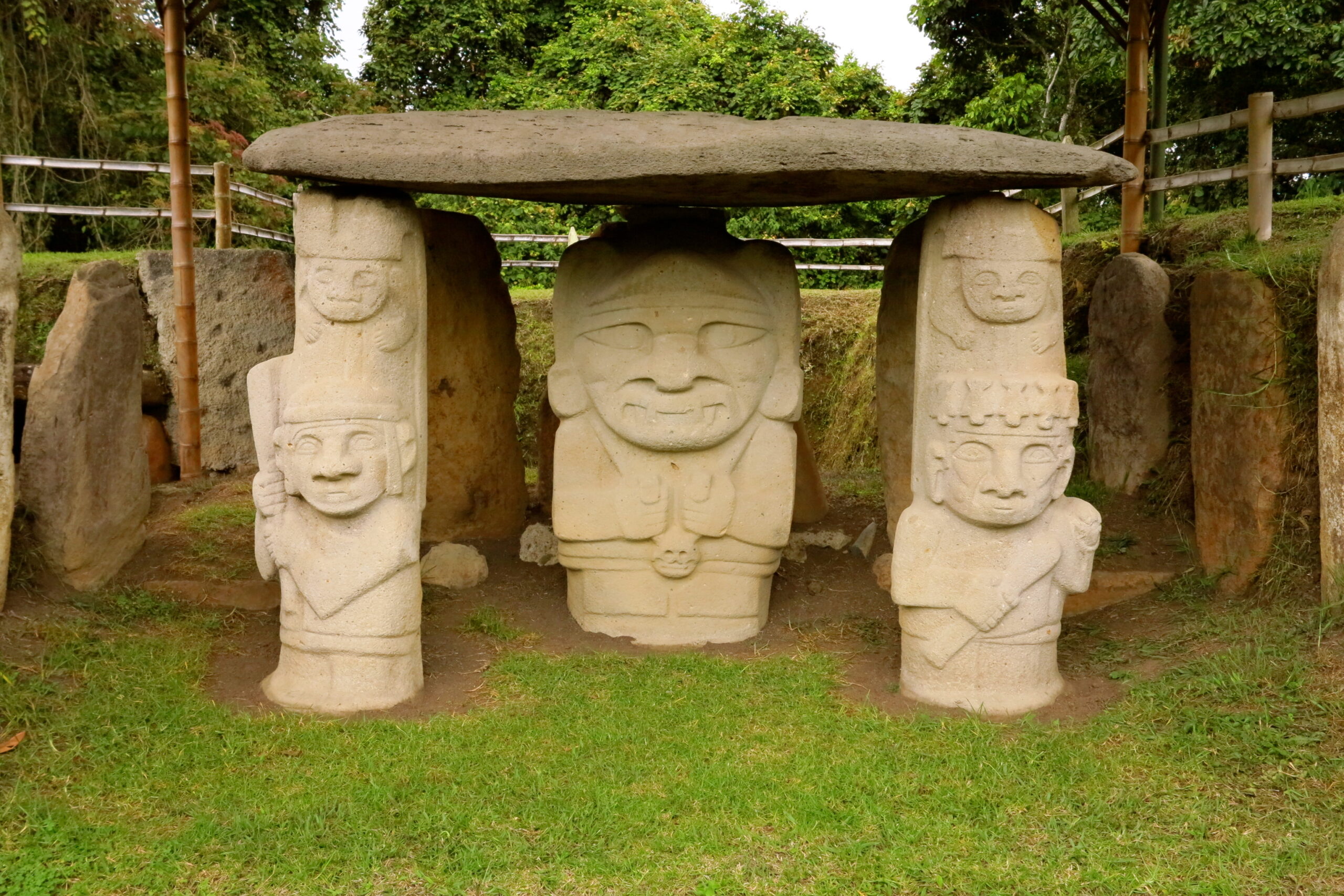The Paleochristian Basilica was discovered and investigated in 1963, during a road reorganization. It is a Latin cross-shaped building with a polygonal apse, built in two phases, between the beginning of the 5th and the beginning of the 6th century. The mosaic paving is remarkable, which in the first phase shows black and white geometric decorations, in the second phase (placed at a level only 6 cm higher) is enriched with polychrome motifs in pelta, double head braided, intersecting rhombuses. A peculiarity of this more recent mosaic carpet is the abundance of inscriptions traced with the tesserae in the floor itself (also visible in the fragments torn from the original site and affixed on the walls of the entrance to the site): they show the names and professions of fourteen benefactors, as well as the mosaic surface they donated to the community; among them stand out subjects of senatorial rank and personalities linked to the local economy, even of oriental origin.The basilica was characterized in ancient times by the presence of the bones of one or more martyrs, whose identity is unknown, which made it one of the most important aggregative centres of the first Tergestine Christian community.
